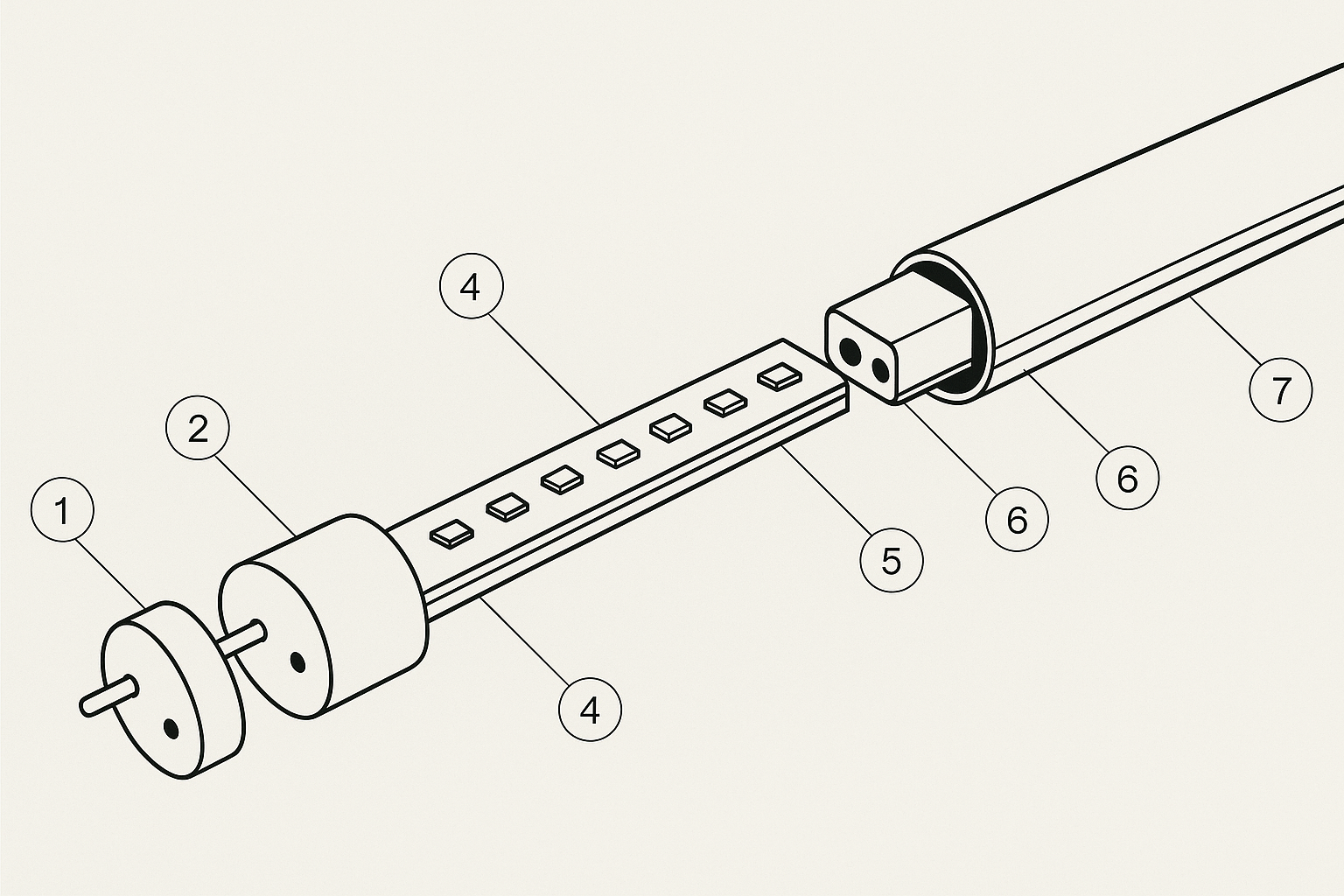Understanding LED Tube Lighting
Hi, I’m Andrew from Buchanan Lighting in Ottawa.
If you’ve ever wondered which LED tubes to use—or why they matter—this guide breaks it down in plain language.
A Quick Look Back: The Fluorescent Era
Fluorescent tubes have been lighting up commercial and industrial spaces for nearly 100 years. They made their debut at the 1939 New York World’s Fair and quickly gained popularity thanks to their efficiency and longer life compared to the old-school incandescent bulbs. By the 1950s, T12 tubes (the big ones) with magnetic ballasts became the go-to in offices, schools, warehouses—you name it.
Then came the upgrades. In the 1980s and ‘90s, T8 tubes with electronic ballasts started replacing older systems. These were quieter, more efficient, and gave off better quality light. Compact fluorescent lamps (CFLs) also caught on around this time for residential use—think spiral bulbs in your kitchen or hallway.
By the 2010s, LEDs were ready for prime time. They started showing up as direct replacements for fluorescent tubes—offering better energy savings, longer life, and less hassle. Some LED tubes can even work with your existing ballasts (Type A), while others bypass them entirely (Type B). Today, LEDs are the standard in most commercial upgrades, but plenty of places still use fluorescents—especially when the existing setup is working just fine.
Here at Buchanan Lighting, we carry both. Whether you need a quick fluorescent replacement or want to start switching to LED, we’re here to help you do it at your own pace.
Types of LED Tubes (and When to Use Them)
Not all LED tubes are built the same. Your best option depends on what you’re working with—your fixtures, your wiring, and how much time and budget you’ve got.
Heads up: Most Type A and Hybrid tubes need an instant start electronic ballast. They won’t work with old magnetic F40T12 ballasts.
Type A – Ballast-Compatible (Plug-and-Play)
These are the simplest to install—just pop out the old tube, put in the new LED, and you’re done. No rewiring.
- Best for: Fast swaps when your ballast is in good shape
- Pros: Quick install, no electrician needed
- Watch out for: If your ballast fails, the tube won’t work
Type B – Ballast Bypass (Direct Wire)
These bypass the ballast completely and connect straight to line voltage. You’ll need to do some rewiring.
- Best for: Long-term efficiency, new installs
- Pros: No more ballast issues, lower power use
- Watch out for: Requires an electrician
Type C – External Driver
These use a separate LED driver, not the fixture’s ballast. They’re usually for more advanced systems.
- Best for: New builds or lighting upgrades that need dimming or smart controls
- Pros: Great lifespan, modern features
- Watch out for: Higher cost, more complex setup
Hybrid (Type A/B)
These can run with or without a ballast, making them flexible.
- Best for: Phased upgrades or if you’re not sure how healthy your ballasts are
- Pros: Versatile now and later
- Watch out for: Slightly higher cost, and may still depend on the ballast to start
Cost Over Time: LED vs. Fluorescent
At first glance, LED tubes might seem more expensive—around $10 each vs. $4.20 for a typical fluorescent. But LEDs last way longer (up to 50,000 hours) and use much less energy (about 9.9 watts vs. 32 watts).

If you’re running lights 12 hours a day, the LED starts saving you money in about 2 years. By year 5, it’s a no-brainer—especially in spaces like shops, hallways, or workspaces where lights are always on.

Quick Guide: When to Use (and Avoid) Each Type
Type A
✔️ Use if:
- You want a quick install
- Your ballast is in good shape
- Hiring an electrician isn’t ideal
❌ Avoid if:
- Your ballasts are failing
- You want max energy savings long-term
Type B
✔️ Use if:
- You’re ready to bypass the ballast
- You want low maintenance and efficiency
❌ Avoid if:
- You can’t (or don’t want to) do rewiring
- You’ve got dozens of fixtures and no time
Type C
✔️ Use if:
- You’re upgrading everything
- You want dimming or smart control
❌ Avoid if:
- You just need a quick bulb swap
- You don’t need extra features
Hybrid
✔️ Use if:
- You want flexibility now and later
- You’re not sure about ballast condition
❌ Avoid if:
- You’re rewiring anyway
- You need the cheapest tube possible
Making the Switch
Fluorescents have served us well, but LEDs offer better performance, lower energy bills, and longer life. Choosing the right LED tube depends on where you’re starting and where you want to end up.
So, what’s next? Now that you’ve got the basics, give us a call at 613-728-3551. We’ll help you find the right lighting solution for your space—and show you just how much you could save on hydro.
Thanks for reading,
Andrew Buchanan
Buchanan Lighting
Want to keep this handy?
[Click here to download the printable PDF version]

